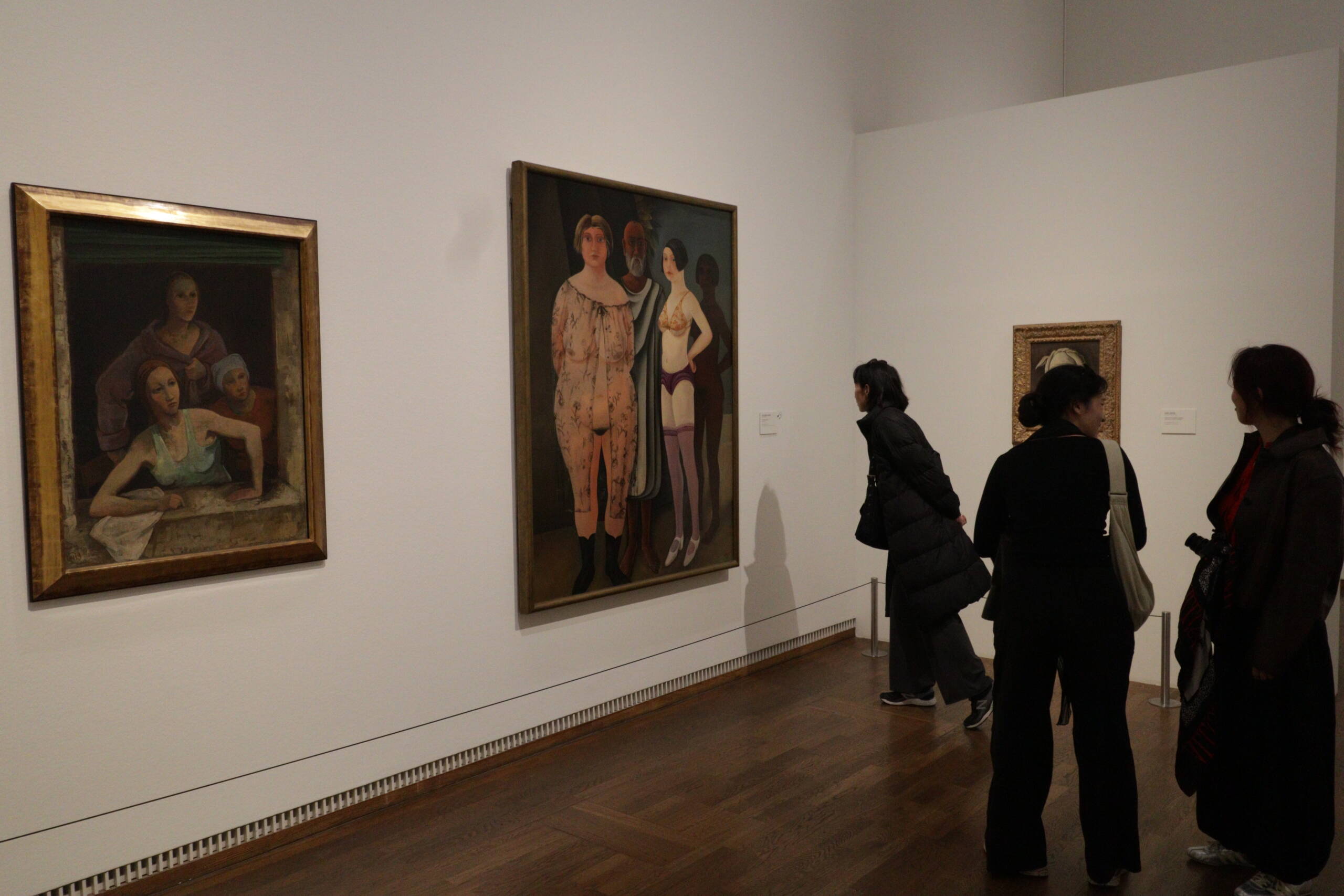The photograph captures a section of the Leopold Museum where Rudolf Wacker’s uncompromising realism meets the soft quiet of contemporary observation. On the wall before the visitors hangs “Frauenakt mit Figurengruppe” (Group of Women, c. 1926–1928), one of Wacker’s most disquieting works. Three figures occupy the canvas: a pale, heavyset woman in patterned undergarments, a darker, more slender woman in lilac stockings, and between them, a robed male figure, possibly a priest or authority. The composition feels tense, almost frozen in moral interrogation. Wacker, a leading voice of Austria’s Neue Sachlichkeit (New Objectivity), had a gift for unveiling the emotional geometry behind appearances—how posture, light, and flesh reveal the psychology of an age trying to recover from war and illusion.

To the left of this centerpiece hangs “Am Fenster” (At the Window, 1929), a smaller painting yet equally introspective. Three figures—perhaps a mother and children—stand near a window, their expressions muted and distant. The composition balances domestic intimacy with quiet melancholy, a recurring motif in Wacker’s work. Here, the light entering from outside becomes symbolic: the world beyond the glass is unreachable, and the stillness inside becomes a mirror for postwar Austrian life, suspended between reflection and resignation.
The small framed portrait on the right belongs to Anton Faistauer, most likely “Weiblicher Kopf” (Female Head, 1919). Faistauer’s delicate brushwork and softer chromatic transitions contrast with Wacker’s structural precision. It represents an earlier stage in Austrian modernism—still tinged with Expressionism, but already shifting toward the analytical clarity that defined the 1920s. Together, Wacker and Faistauer illustrate the turning of the artistic tide in Vienna: from the emotional storms of Expressionism to the still, almost surgical realism of the interwar period.
The image itself, showing three women standing quietly before these works, mirrors the very tension Wacker painted. Each visitor takes on the same contemplative posture as his subjects—observing, judging, empathizing. Their silhouettes against the soft gallery light create an uncanny continuity: modern viewers reflected in modern art, each bearing the same subtle unease of existence under observation. The Leopold Museum, by placing these works side by side, transforms a quiet gallery into a dialogue about humanity—how we look at others, how we are seen, and how the act of looking itself becomes art.
Leave a Reply